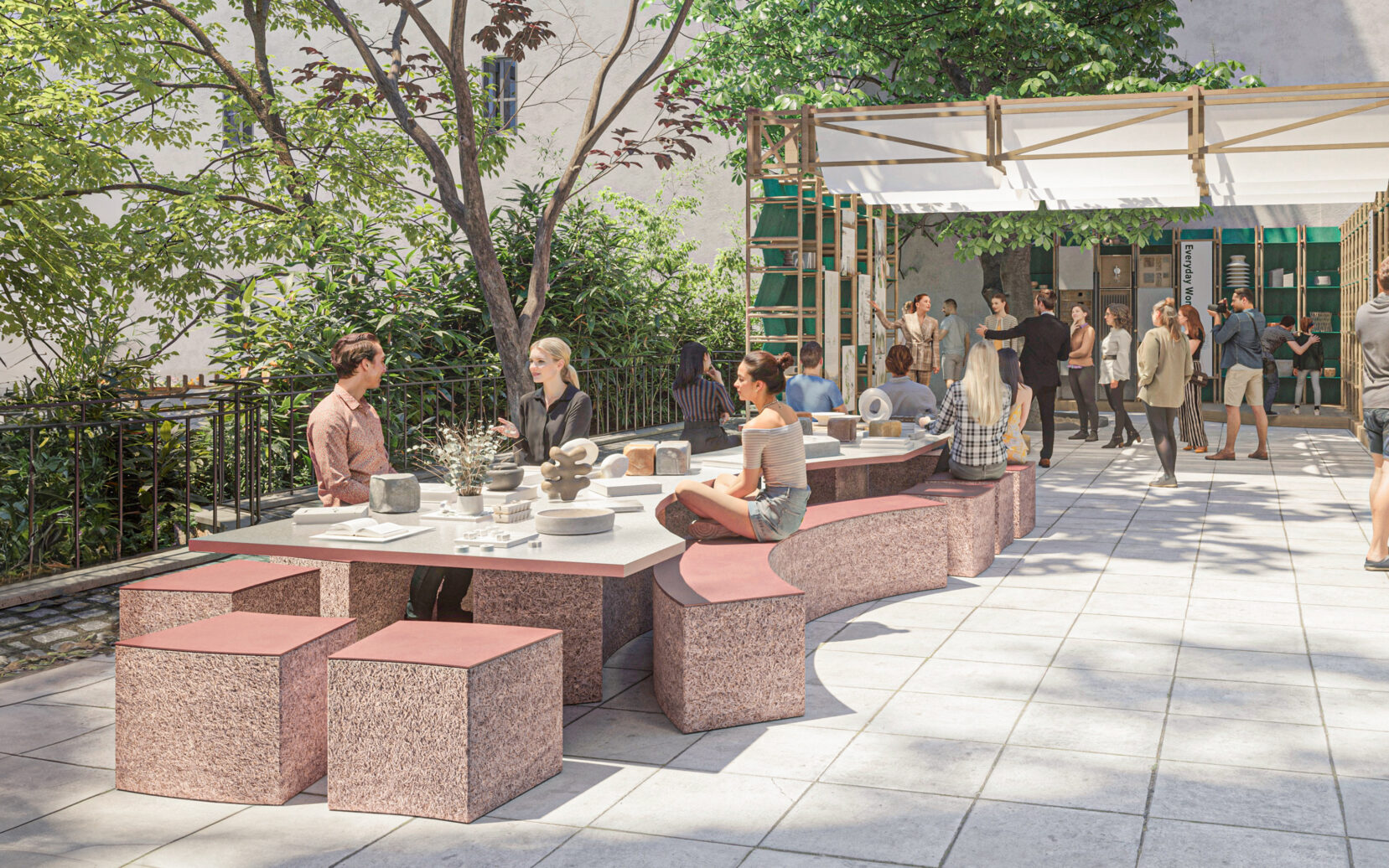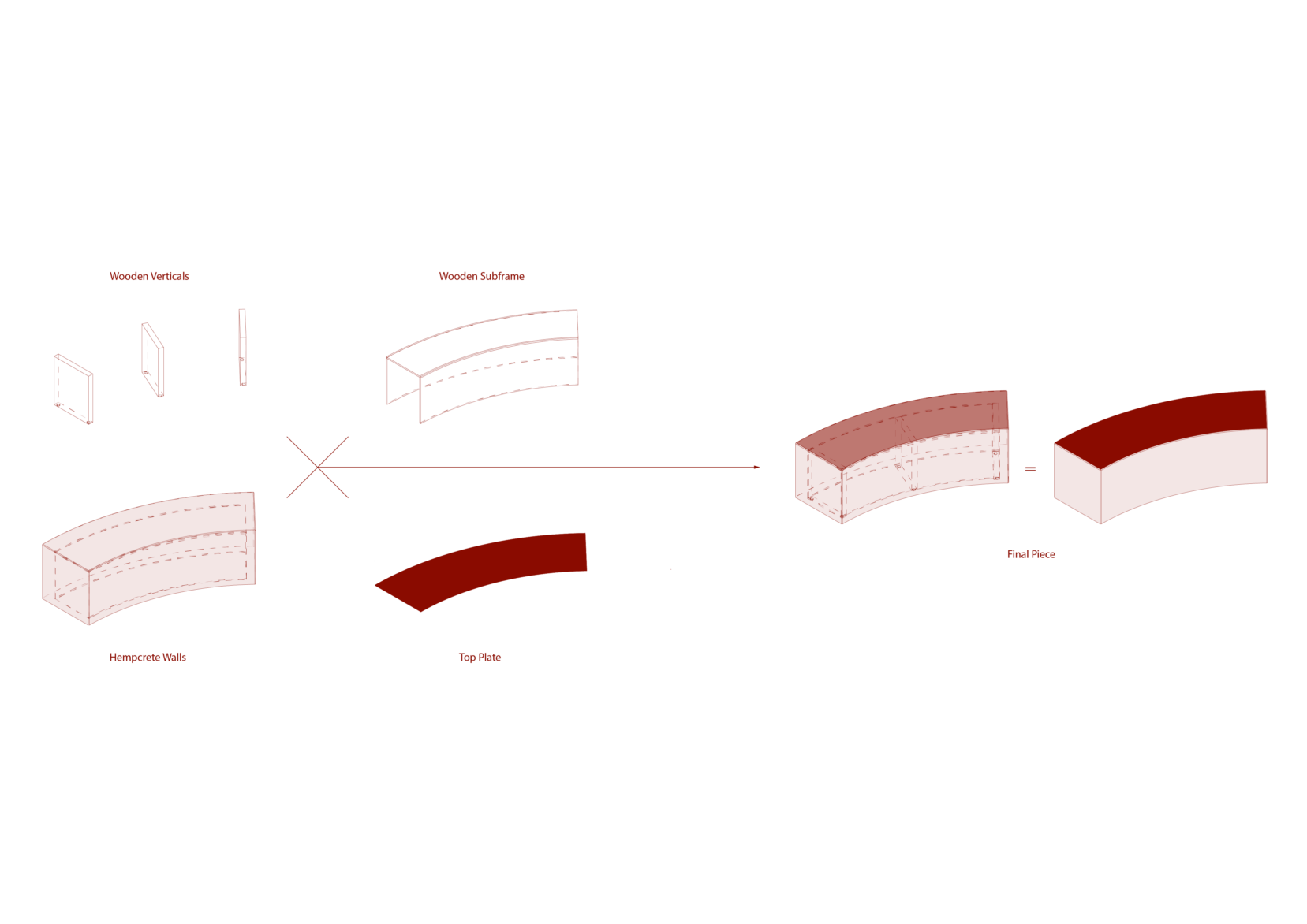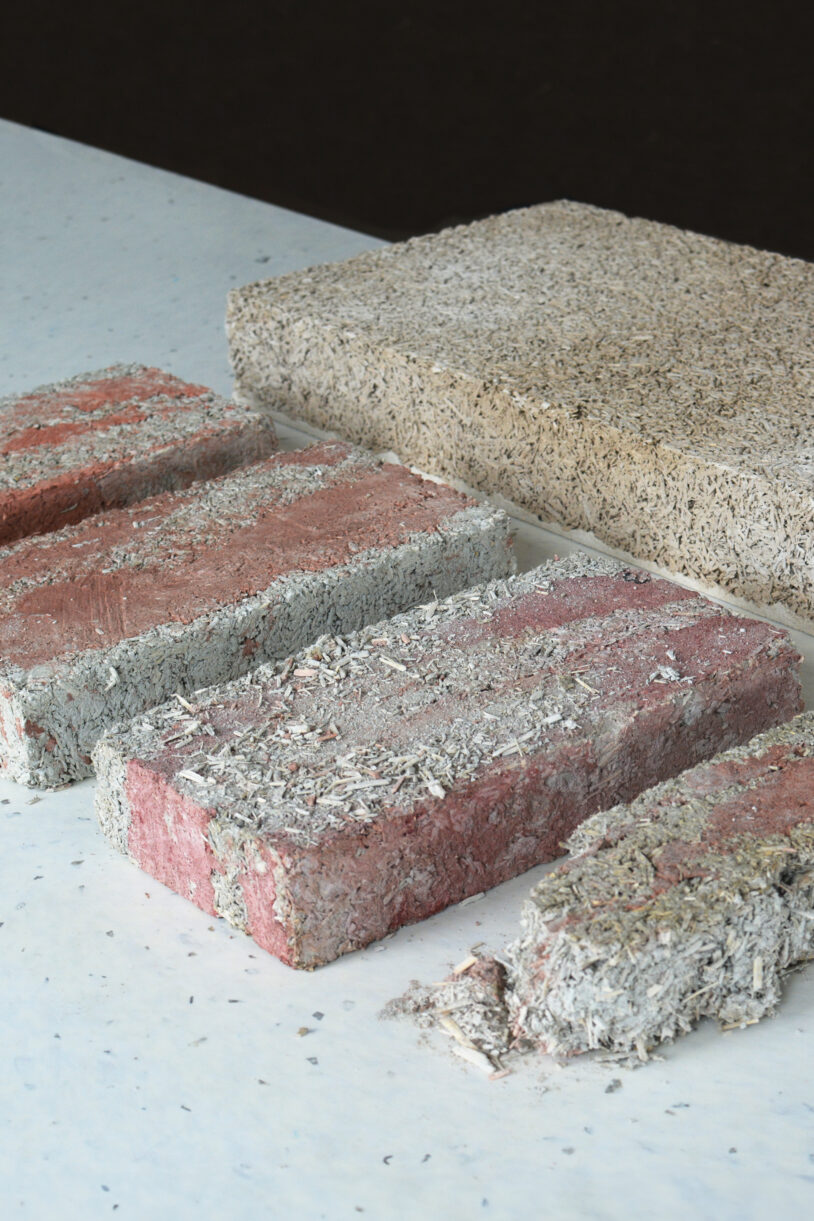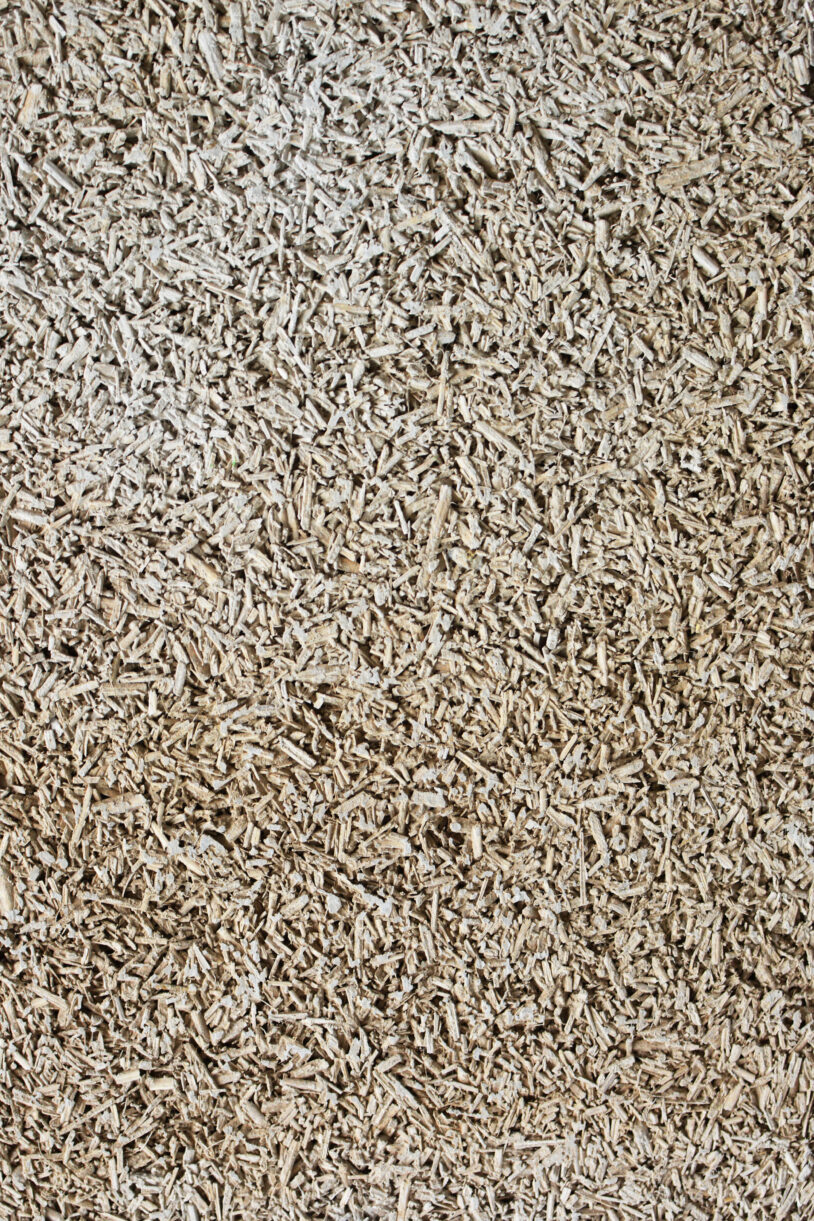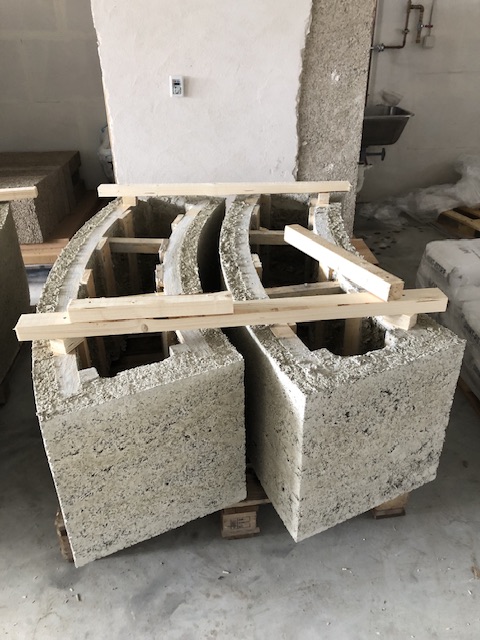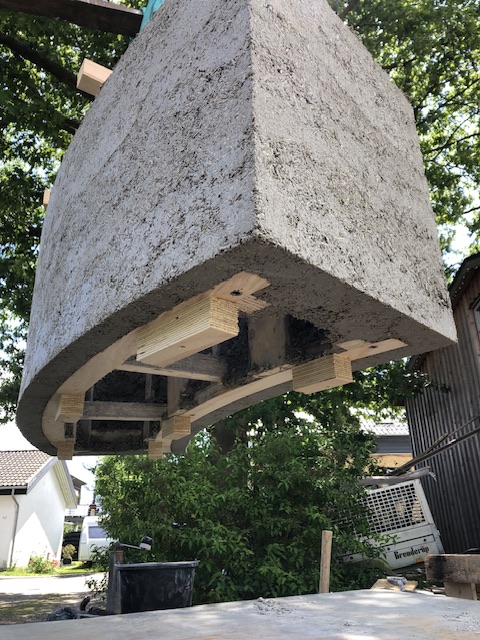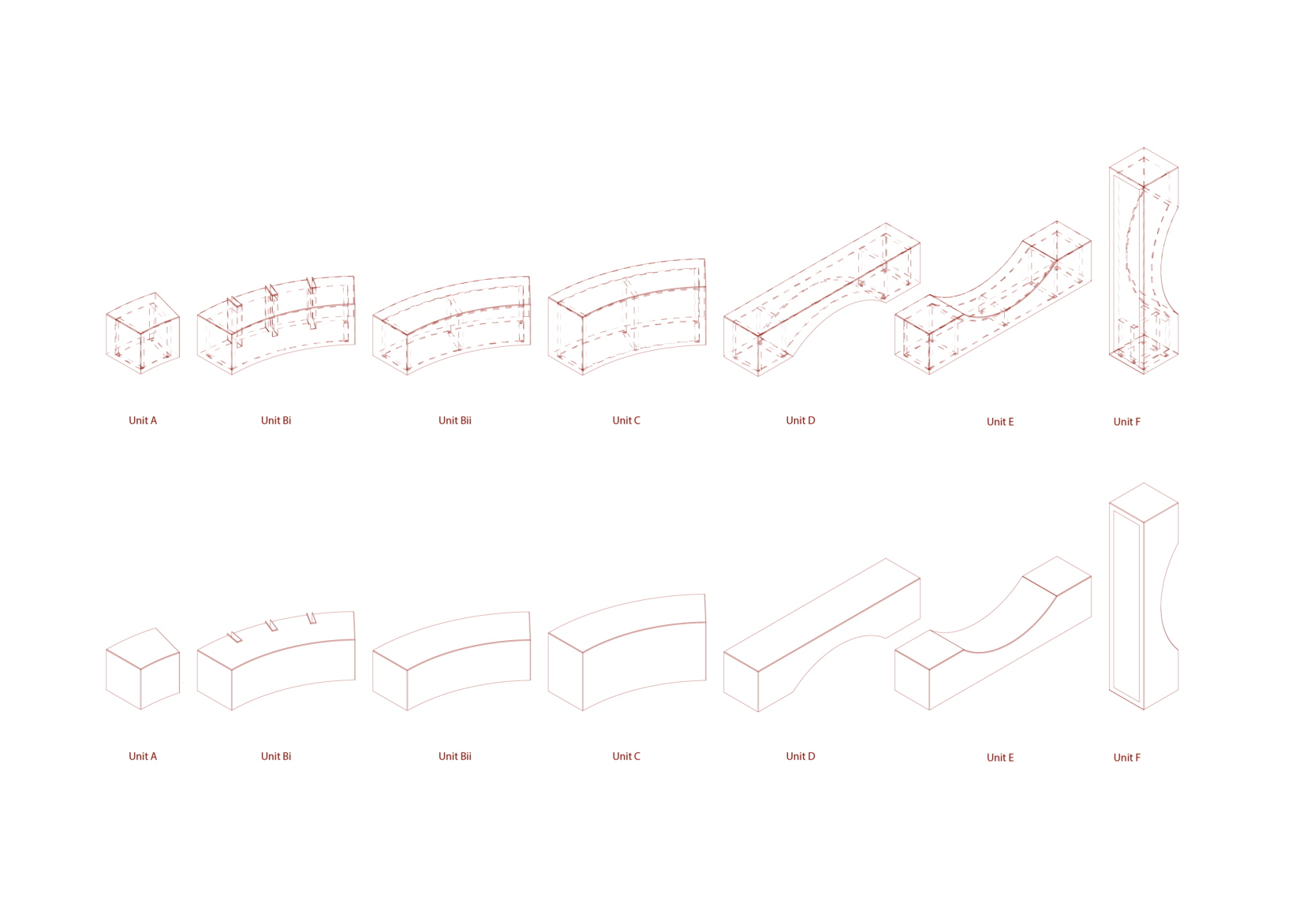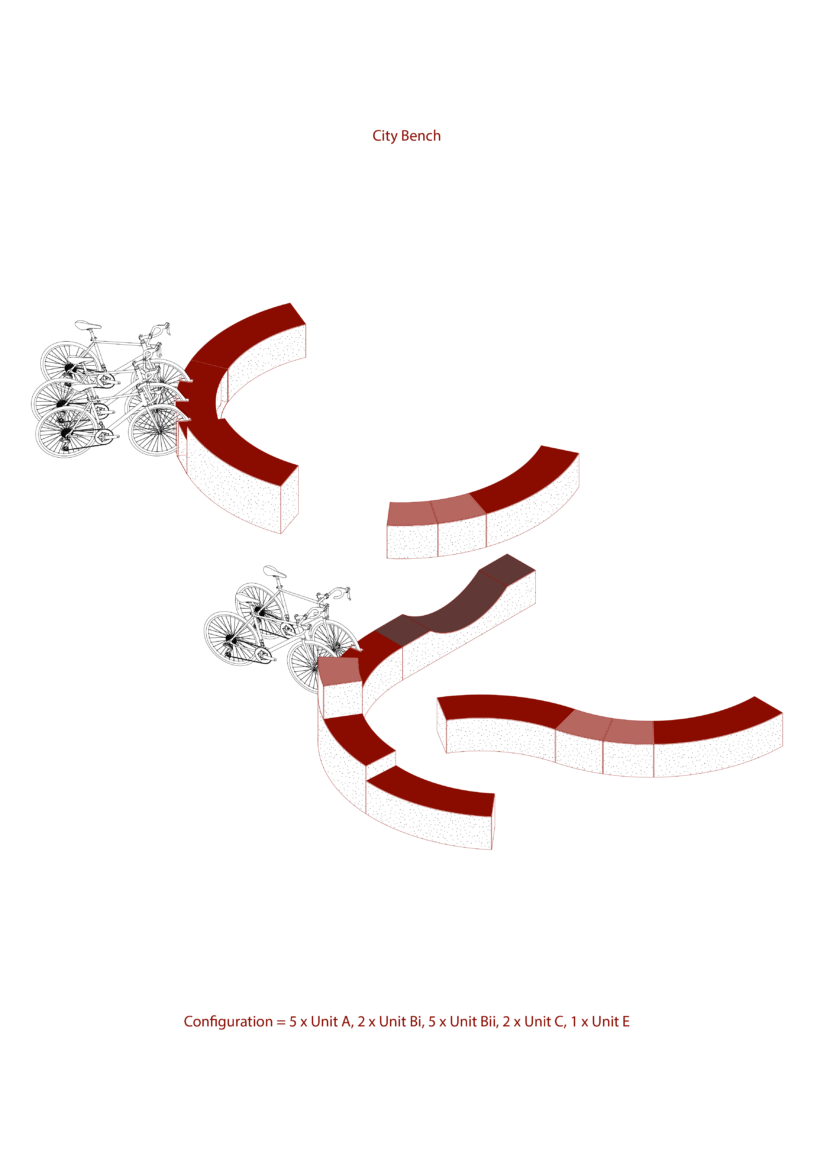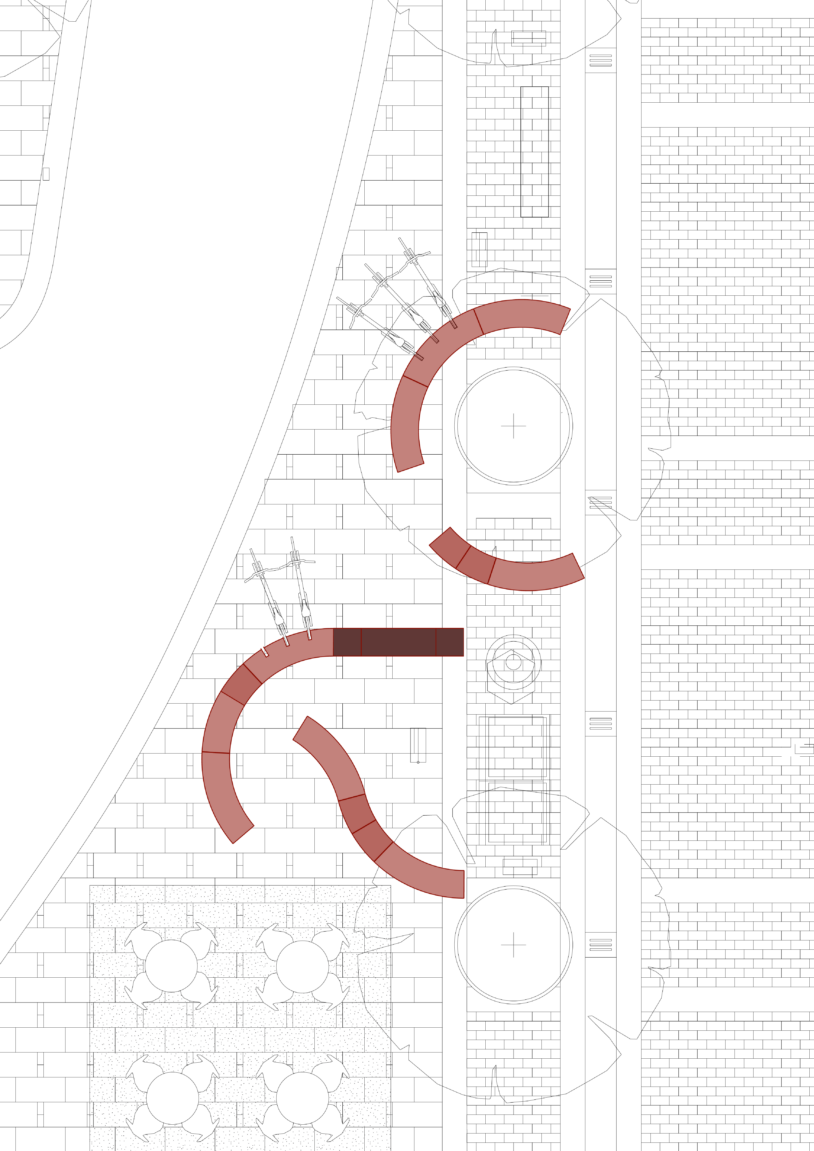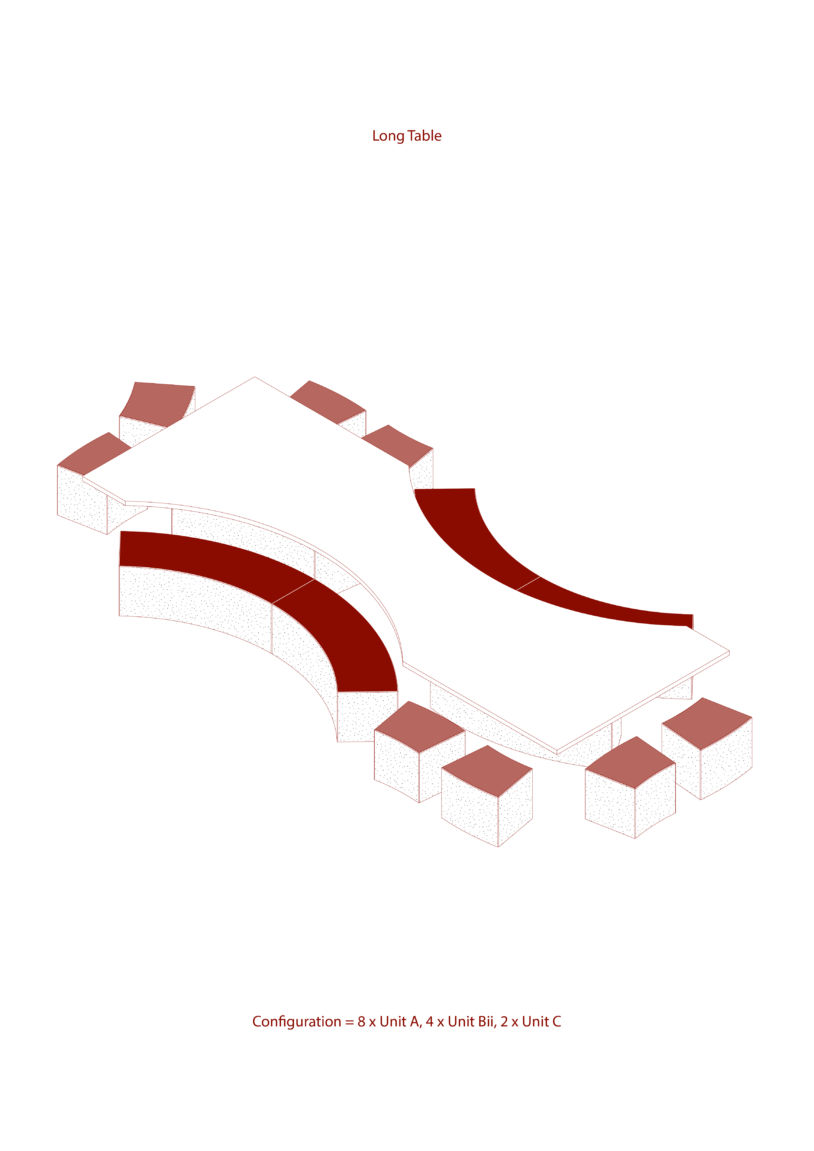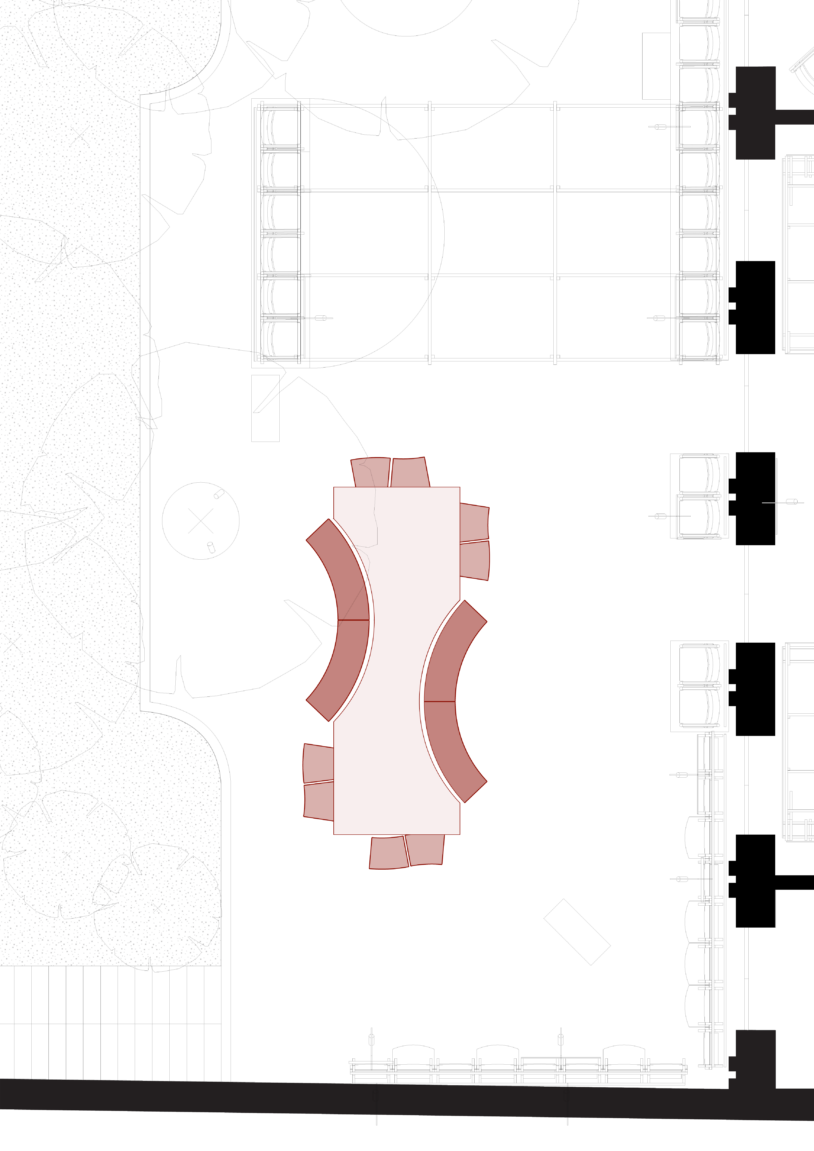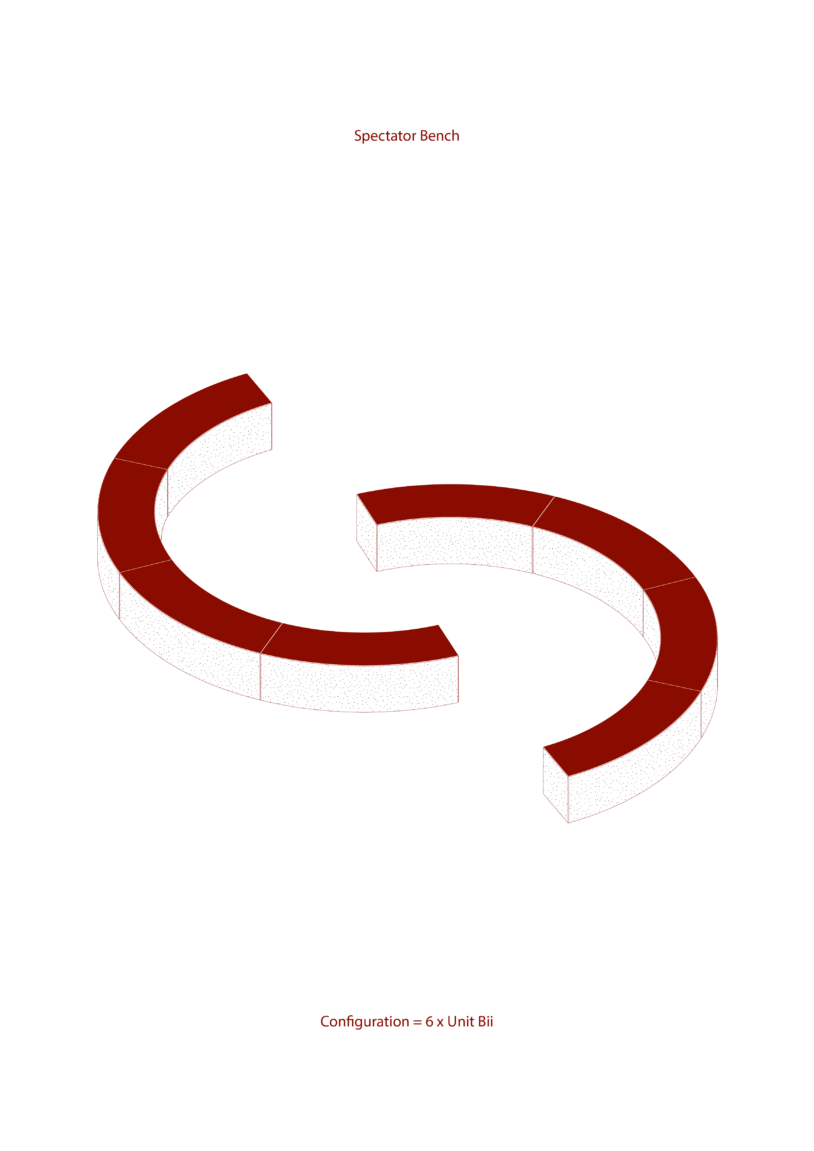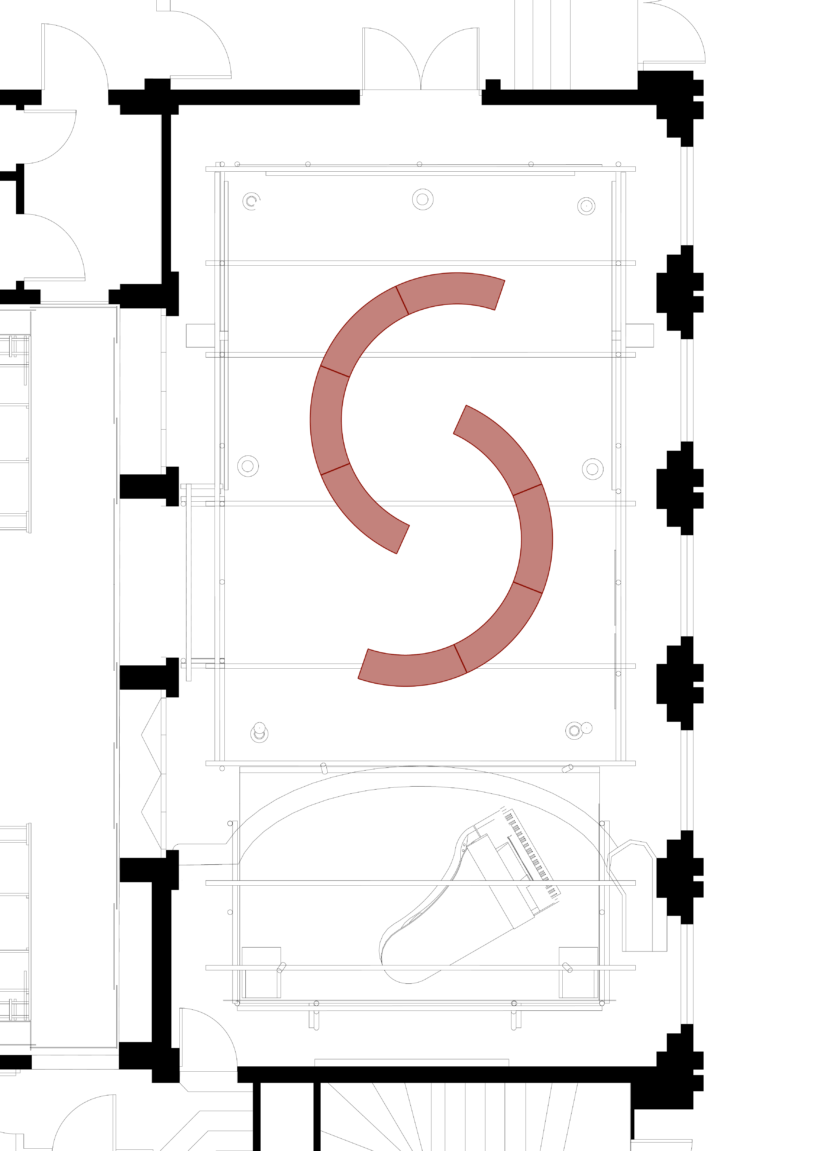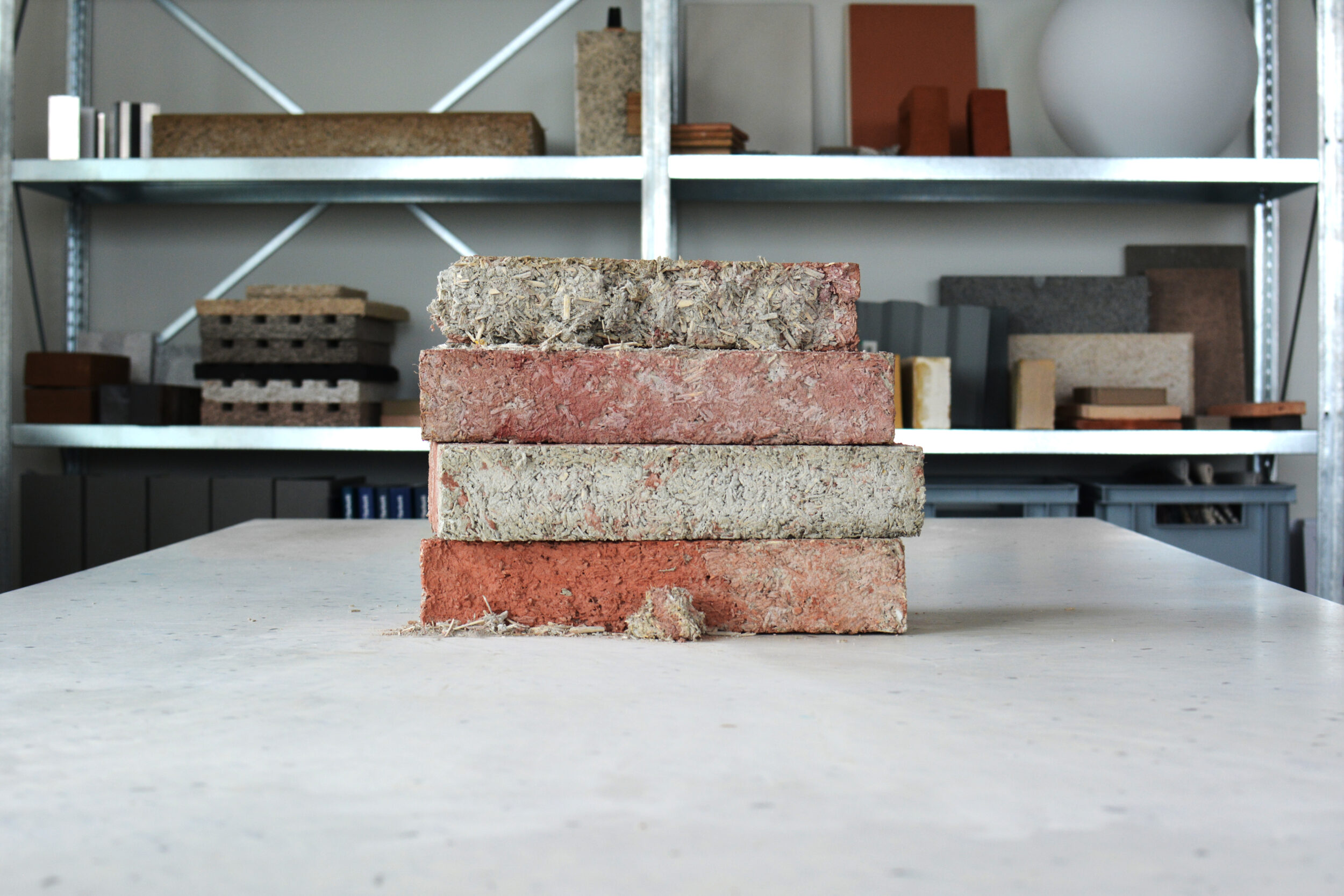Sustainable Seating Modules – The Denmark Pavilion
This project, showcased in Paris during the upcoming Olympics as part of ‘The Denmark Pavilion’, features custom-designed seating modules that can be combined in various formations. The geometry of the modules is based on the circle, a formal expression of community and democratic openness. This design aims to promote social interactions through three distinct configurations, each addressing different aspects of human togetherness.
The City Bench transforms public space into a scene for spontaneity and presence. Arranged in semicircles, the bench allows for both intimate conversations in the concave curve and reflection in the convex curve. Here, the rhythm of the city is experienced through moments of pause, where the familiar and the unfamiliar meet.
The Long Table invites deeper engagement through its physical structure, referencing the dining table at home. The depth variations in the table create a play between proximity and distance, where interactions become a game between the convex and the concave. It provides a framework for shared activities, where the dynamic of facing ‘inward’ or ‘outward’ becomes part of the conversation.
The Spectator Bench is designed for the observer. Here, one is framed within a formation that enhances the experience of witnessing something greater. Film screenings projected on the surrounding walls transform the space into a place for collective viewing, where the shared experience of art becomes a unifying force.
HempCrete, the material used in the modules, consists of hemp, lime, and water – a bio-composite that both breathes and insulates. HempCrete’s ability to regulate moisture and maintain a constant relative humidity, combined with its fire-resistant properties, points to a deeper connection between natural cycles and human-made structures. Hemp, as a fast-growing and weed-resistant plant, absorbs large amounts of CO2 during its growth. This absorption is stored in the finished modules, making them a depot for atmospheric carbon. The production of HempCrete requires significantly lower temperatures than traditional building materials like brick and concrete, and when the material has served its purpose, it can be composted and reintegrated into nature’s cycle.
The project is an exploration of how form and material can create new ways of being together, where the urban meets the organic, and each interaction becomes part of a larger narrative about community, sustainability, and aesthetic experience.
